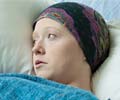Two pain management specialists, including one of Indian origin, have come up with a technique that can help end chronic back and leg pain - without the need of taking drugs.
Two pain management specialists, including one of Indian origin, have come up with a technique that can help end chronic back and leg pain - without the need of taking drugs.
The novel technique combines two procedures. One is an implanted electronic device called a dorsal column (spinal cord) stimulator and the other is a technology known as peripheral nerve field stimulation (PNFS)."Patients can have the best of both worlds: relief from leg and back pain they can't get even with the strongest pain medications," said Eugene G. Lipov, MD, Director of Pain Research at the Northwest Community Hospital, Arlington Heights, Ill.
The implantable dorsal column stimulators stop pain signals from reaching the brain, and the peripheral nerve field stimulation focuses on shutting off pain signals further away from the spinal column.
Together, the two effectively block the body's pain signals from the legs and back to the brain.
So how does this procedure work? Well, the hybrid stimulator, which is approximately the size of a small cell phone, is implanted subcutaneously (under the skin) in the abdominal wall, side of the back, or in the upper hip area.
Typically, three electrical leads connected to the stimulator unit are then implanted in areas of the lower back and leg where the patient has felt the most pain.
Advertisement
The hybrid stimulator can be left in place for seven to nine years, at which time a simple surgery is performed to replace the battery only, not the electrical leads.
Dr. Lipov added: "We believe this new procedure will restore quality of life to millions of patients who suffer from back and leg pain and who have not found relief from surgery or drug treatment."
The hybrid stimulator has been implanted in 19 patients since August 2007, with the receivers reporting 60 to 100 pct reduction in pain.
The findings will be presented at the American Society for Stereotactic and Functional Neurosurgery conference in Vancouver, British Columbia, Canada, in June.
Source-ANI
SPH/L









